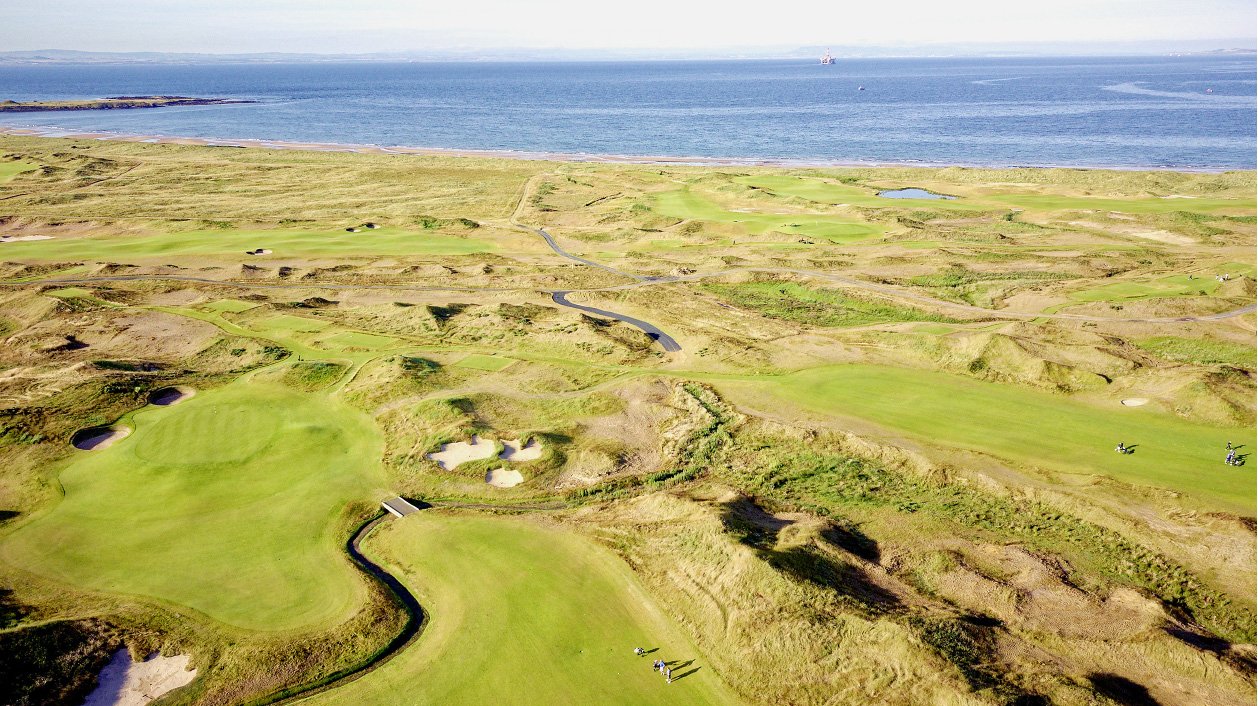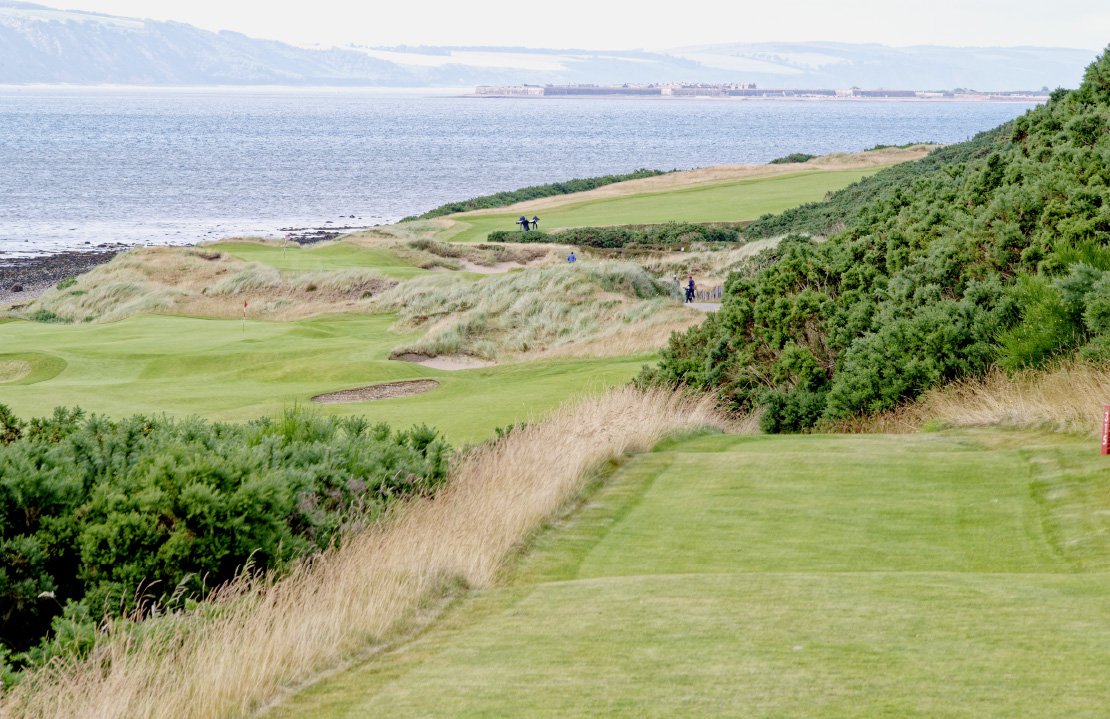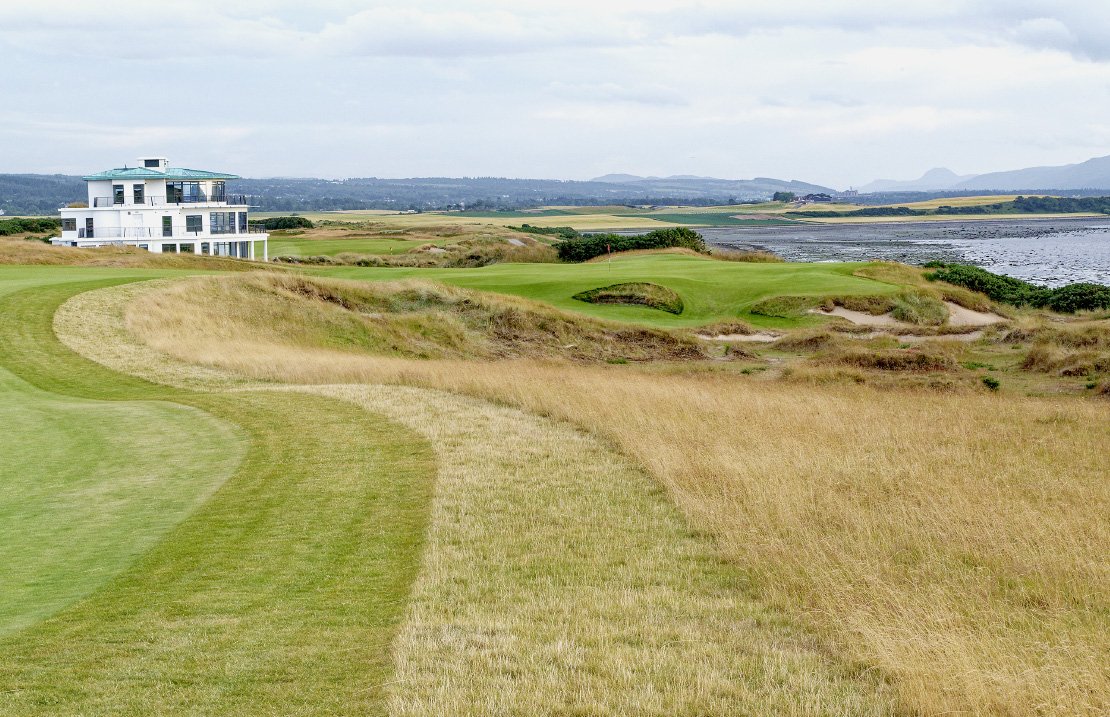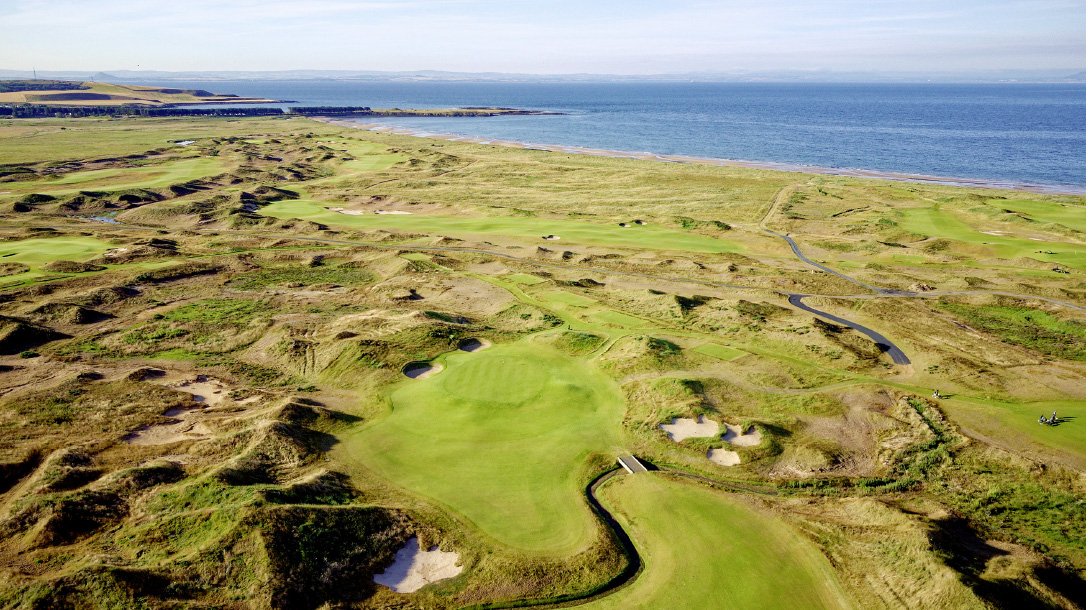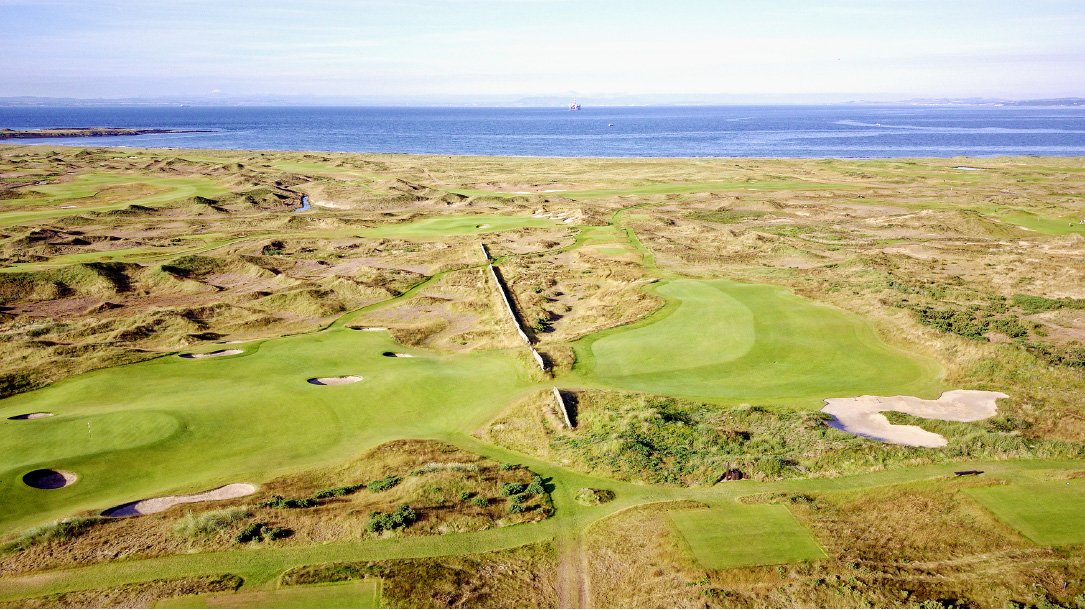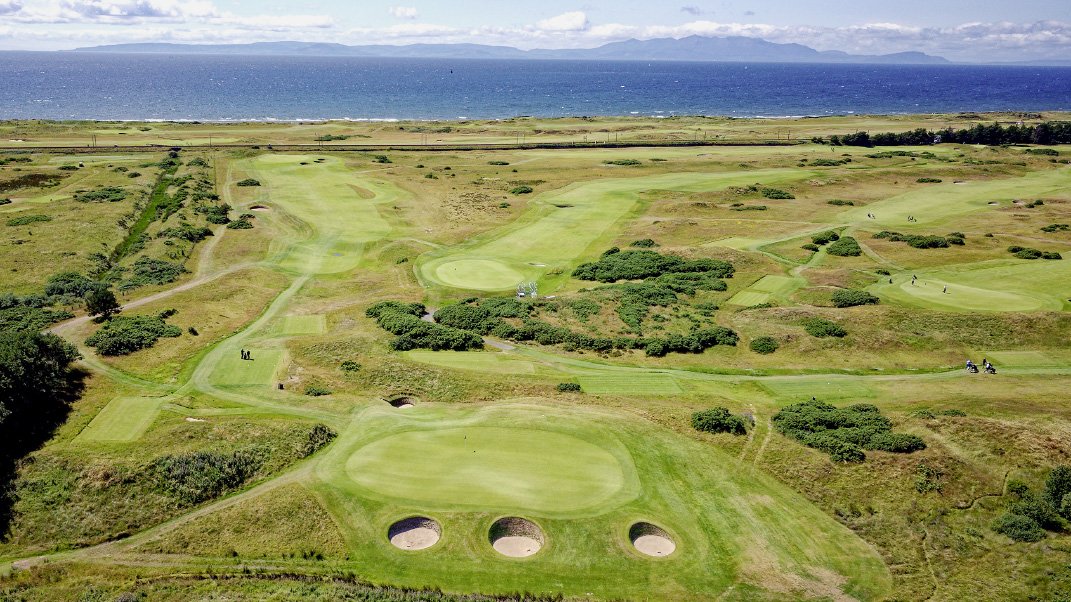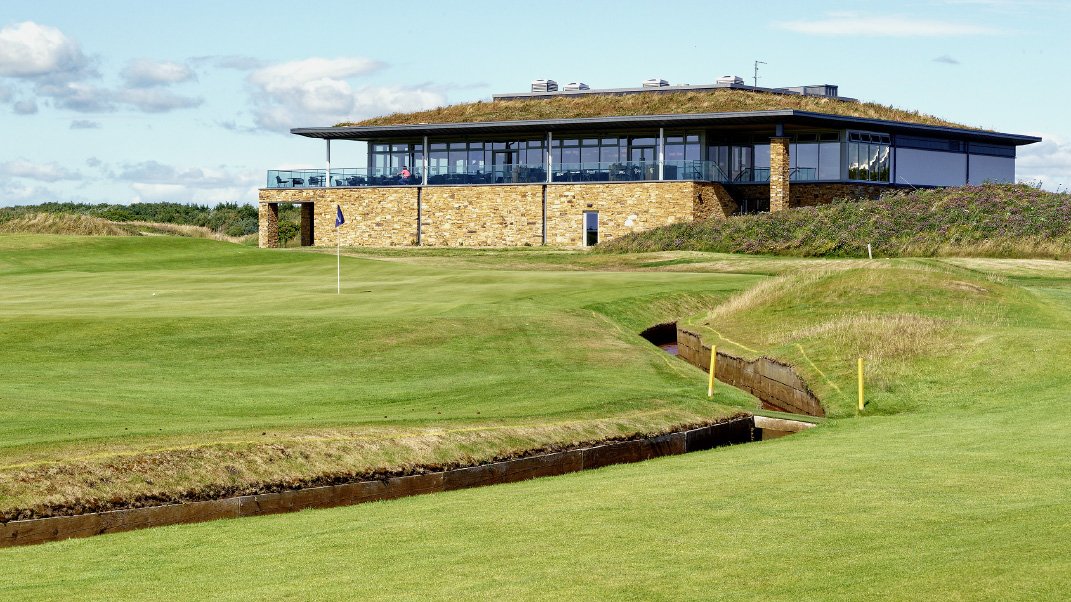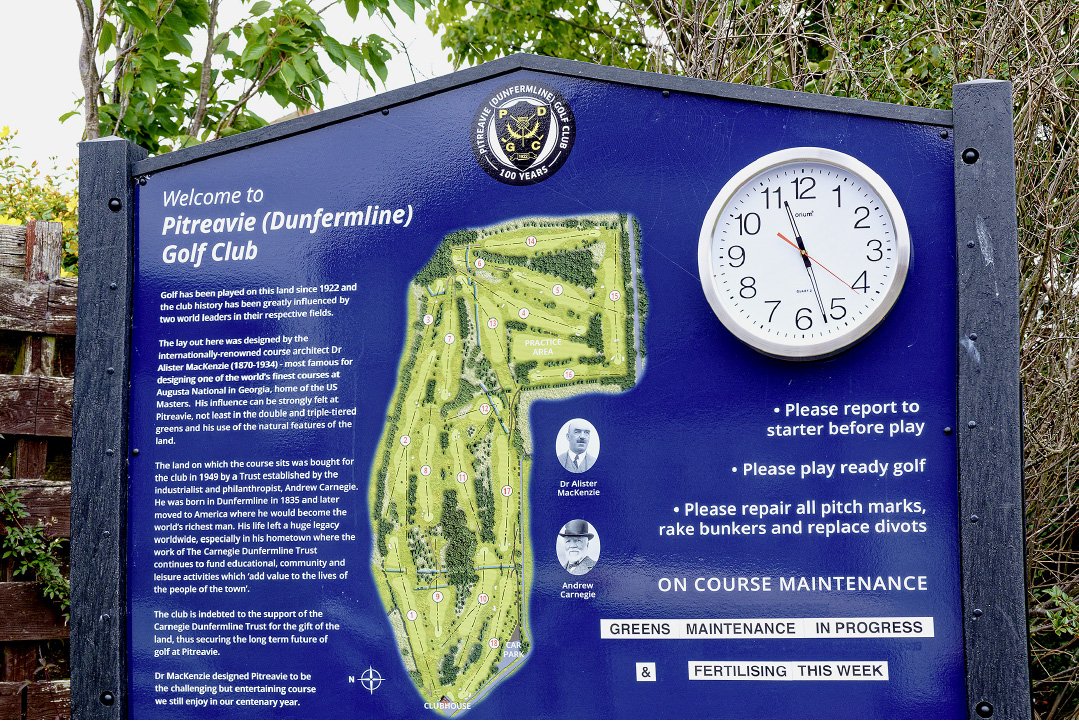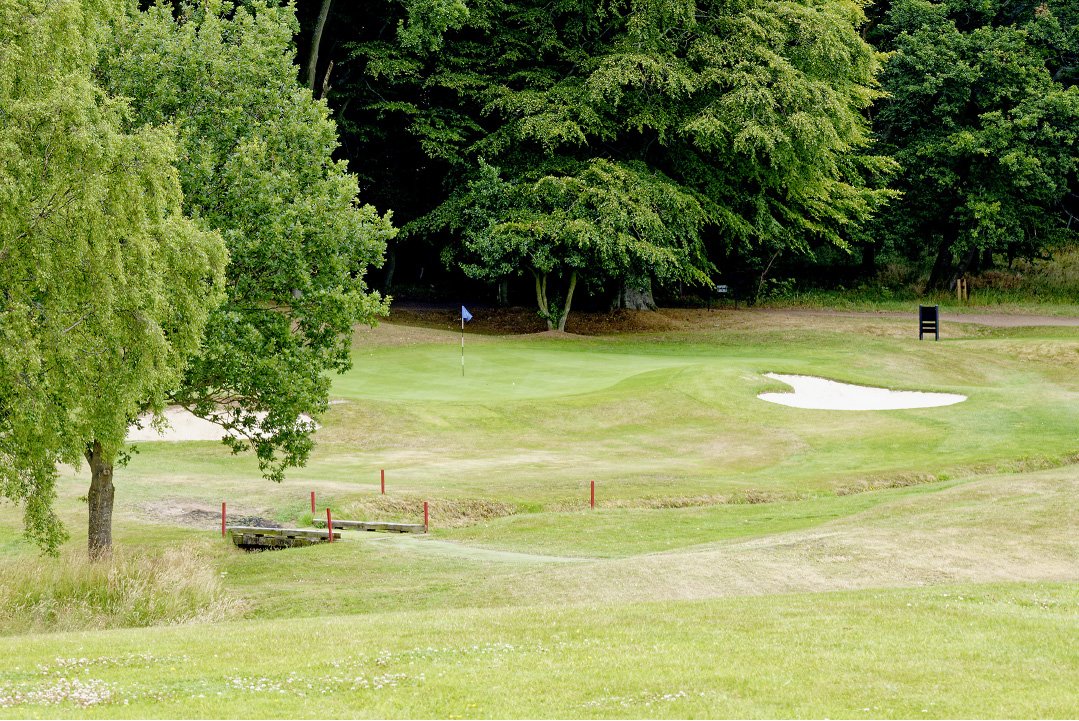Golf Scene Scotland – far more than St Andrews and The Open
Charming blend of tradition and modernity
Scotland with the "Home of Golf" in St. Andrews is considered the birthplace of modern golf. Many of the roots of the sport in its current form have been layed there. This applies to the game of golf itself (even though the Netherlands also claim the origin of golf), but also, for example, to the rules of golf, which were first put down on paper in 1744 by the Gentlemen Golfers of Edinburgh. The re-design of the Old Course at St. Andrews by none other than Old Tom Morris continues to have an impact to this day; even the 18-hole standard originates from St. Andrews (originally, the Old Course had 22 holes). And of course, the oldest major, The Open, was also launched in Scotland: in 1860, after Allen Robertson died as the universally recognized greatest golfer of his time, the new champion Golfer of the Year was sought. It was not until a year later that a certain Abraham Lincoln was to be crowned President of the USA for the first time... Even though the Rota of The Open includes golf courses in England and Northern Ireland in addition to Scotland: its reputation as the Home of Golf has been defended by Scotland and especially the St. Andrews region to this day. According to official figures, Scotland had a total of 568 golf courses in 2021, and the governing body Scottish Golf counted 207,676 golfers in the same year. This means that each golf course has a statistical average of just under 366 members - quite a small number compared to Germany. However, this figure already illustrates a partly completely different market orientation of the Scottish golf offer. Numerous facilities offer no memberships at all and are geared purely to pay & play. And guest players, not only from overseas, but also from other parts of the UK and Europe, are an integral part of the operation of the facilities.
Tradition meets modern times
In Scotland, too, golf was on the downswing pre-Covid, but was able to make significant gains during the pandemic. More interesting: even during Covid, existing facilities were expanded and newly opened, especially with regard to guest players. In international professional golf, St. Andrews is firmly established as a Mecca of Golf. The annual Alfred Dunhill Links Championship is an integral part of the DP World Tour tournament calendar. Gleneagles has positioned itself excellently through both the Ryder Cup and the Solheim Cup. With seven of The Open Rota's 14 venues (active and former venues serving as a base), Scotland's importance to golf is once again underscored. With the 150th The Open in July 2022, therefore, not only St. Andrews once again moved to the center of the golf scene, but Scotland as a whole. The golf variety is particularly large around the internationally best connected metropolises Glasgow as well as Edinburgh with the region Fife, to which also St. Andrews belongs. The regions of Fife, Edinburgh and East Lothian alone have a total of around 100 facilities of various quality levels for a wide range of target groups. Around Glasgow, in addition to the birthplace of The Open in Prestwick, there are also almost 100 facilities awaiting visitors. But the Scottish Highlands are also increasingly developing into a golf destination - whisky fans in particular will appreciate the combination options with the Whisky Trail. The diversity of the Scottish golf offer is based above all on the mixture of tradition and modernity. Those who land in Edinburgh can explore many historic sites around Scotland's capital on the way to St. Andrews. Musselburgh Old Links is considered the oldest golf course still in play - the 9-hole course, which hosted The Open six times between 1874 and 1889, was first documented in 1672, but its origins are thought to date back to around 1567. Just a few minutes' drive from Edinburgh Airport, the oldest golf club, the Royal Burgess Golfing Society of Edinburgh, dating from 1735, has its current headquarters. Heading toward St. Andrews, Lundin is home to the Lundin Ladies Golf Club, founded in 1891 and the oldest ladies' golf club in Scotland. Not far away, Cupar Golf Club, founded in 1855, has its home and is considered the oldest 9-hole golf club in the world. But even if the tradition of the Home of Golf with the Old Course is one of the main attractions for golfers from all over the world: the example of Kingsbarns impressively proves that new, modern golf courses have also quickly found their fans - and predominantly in the upper price segment with a clear focus on guest players from overseas and Europe.
On the occasion of The Open, golfmanager visited three facilities that have either been built or expanded in recent years, as well as a traditional golf club that is particularly dedicated to its local members and places great value on tradition in terms of both community and course architecture. Detailed interviews with the managers of the facilities visited can be found online; the direct link is provided with each facility at the end of this article.
Castle Stuart goes Cabot Highland
Castle Stuart in the north of Scotland, just a few kilometers from Inverness and the famous Loch Ness, is one of the most successful new golf courses not only in the country, but worldwide. Golf at the highest level has been offered here for a good 10 years. The mastermind behind the facility was entrepreneur and visionary Mark Parsinen, who was also responsible for Kingsbarns near St. Andrews. The opening took place immediately after the financial crisis - certainly a daring venture. But Parsinen didn't doubt his concept for a second even then, as Stuart McColm, general manager with Castle Stuart Golf Links, reports: "We only have one chance to open and one chance to show who we are and what we do!" was Parsinen's credo at the time. Sadly, Parsinen died in 2019, before he could complete his vision of a golf resort in the Scottish Highlands. Castle Stuart achieved worldwide attention by hosting the Scottish Open from 2011 to 2013, and in June 2022, the Cabot Group announced its entry - in the future, the resort will operate under the brand Cabot Highlands. "For them, it means they don't have to start from scratch in Scotland. Castle Stuart, the first golf course, is already generating money and has a reputation as one of the top 100 golf courses in the world," McColm says, describing the difference from building a completely new resort. While the site is currently limited primarily to one of Gil Hanse's finest and most beautiful golf courses, under Cabot's direction it will become a complete resort in the sense of a community. Ben Cowan-Dewar, co-founder and CEO of Cabot, is relying on the expertise of experienced developers for the development. "Hart Howerton is, in Ben's opinion, the best company to build such communities. We're aiming for a Highland community with golf, a spa and restaurants, not just a multi-story hotel - and you should be able to walk to everything," McColm says, explaining the plans moving forward. A second golf course is also planned; it will be designed by Tom Doak. "Doak is demonstrably the best and most successful architect of the modern era among the top 100 facilities," says the on-site general manager, pleased with the architect selection. The new course will most likely be available in 2025. Unchanged, Cabot Highlands will continue to offer no memberships and focus purely on guest players. "When we came to the Highlands, we certainly didn't want to compete with the existing clubs in terms of memberships," says McColm, explaining the concept - and today he is pleased to have excellent partnerships with his colleagues at Royal Dornoch and Nairn. With the expansion of the resort and the second course, Cabot Highlands is making a significant contribution to transforming the Highlands into a golf destination. Going forward, the customer experience will continue to be the focus of all activities - yet the golf product is seen as needing explanation. "We consider ourselves the sommelier of the golf course. We try to explain the design and philosophy to our guests on the first tee - we give them the tasting notes. If you don't give them those tasting notes, they may not understand the course," says the manager, describing his approach. The excellent feedback from his guests shows that the team, including caddies, obviously provides the right explanations for the majority of guests.
For a detailed golfmanager-interview with Stuart McColm, General Manager Castle Stuart Golf Links, click HERE.
Dumbarnie Links - Newcomer with Multiple Awards
'Best New Golf Course' 2021 at Golf Inc, winner of the World Golf Awards 2021 in the category 'Best New Golf Course', double winner at the Scottish Golf Tourism Awards 2021 in the categories 'Best Golf Course over £151' and 'Best Scottish Golf Experience' - the still very young history of Dumbarnie Links, which only opened in 2020, is already rich in awards. Located about a 20-minute drive south of St. Andrews, the links course caters exclusively to green fee players and only opens seasonally. "We are a pay-and-play course like many others in Scotland. We open for the season, from April to October, and then close for the winter," says David Scott, general manager of Dumbarnie Links, describing the concept. Early on, the U.S.-based Troon Group was involved, and the facility continues to work with them until today. "Troon has been involved here from the beginning. We opened the golf course in May 2020, and they were involved 2.5 to 3 years before that with designing the clubhouse and working with the contractors to get things going," the manager said. Compared to other facilities, Dumbarnie not only offers excellent views of the Firth of Forth, but uses a comparatively huge area of land, so there is little chance of a player placing their ball on the wrong hole. Part of the marketing strategy, especially to raise awareness in the U.S., was hosting the 2021 Women's Scottish Open. "We had television, live streaming to America via Golfchannel in the U.S.. That generated about 4 million USD in marketing for us throughout the week," Scott says, pleased with the successful marketing coup. After the opening, efforts were focused entirely on the week of the 150th The Open in neighboring St. Andrews. But then, in spring 2022, the shock came: due to the weather, some holes did not meet expectations in terms of course condition - and management decided on a radical measure, the complete closure of the course. "We had very young fescue grass on our greens, and we had eight weeks of very strong easterly winds, which is certainly quite unusual. ... Financially, it cost us about 1 million USD - that was tough, but it was the right long-term decision!" the manager said. That the decision was the right one is shown by the enormous demand and the excellent feedback during The Open. "This week we are full with 250 golfers per day, many of them leading managers from the world of golf. We've had the chairman of the British PGA, the president of the US PGA, former Open champions like Ian Baker-Finch, Gary Player and Bob Charles in attendance," Scott enthuses. Although the course has its own fountains, it deliberately avoids excessive use of water, an increasingly scarce resource. "We want hard, firm fairways, and we plant fescue here that doesn't need much water anyway," Scott explains of the philosophy at Dumbarnie. Finding qualified staff, on the other hand, is much more challenging. "There is a massive shortage in the hospitality industry, the Brexit has led to a significant staff shortage," he says. Currently, his facility benefits from its location because from the Dunfermline region, his employees have about 20-30 minutes less travel time each way compared to a workplace in St. Andrews. Scott sees the fact that the individual employees have already become successful teams within a very short time primarily as a success of his department managers, who place great value on the cohesion and qualifications of the employees.
For a detailed golfmanager-interview with David Scott, General Manager Dumbarnie Links, click HERE.
Dundonald Links - From Dependance to Top Resort
Dundonald Links is one of the golf facilities in Scotland that Golfmanager has been following for many years. At the time of the first report in ► golfmanager 3/16, the facility was owned by the renowned Loch Lomond Golf Club. Sales were already completely geared to guest players at that time. An important building block was the redesign of the course, completed by star architect Kyle Phillips. Just one year later, both the men's Scottish Open (Rafa Cabrera Bello's victory is commemorated today by a plaque on the 18th fairway) and the women's Scottish Open were played on the same course for the first time within 14 days (► see golfmanager 4/17). Even then it was clear: the course has not yet reached the end of its development, which was particularly evident from the temporary clubhouse. In early 2019, a change of ownership took place: the Loch Lomond Golf Club sold the facility for £4.5 million to vacation resort developer and operator Darwin Escapes, which already had two other golf facilities (Kilnwick Percy Golf Club, Yorkshire, and The Springs Golf Club, Oxfordshire) in its portfolio. "A point had been reached where action was required with regard to Dundonald Links," says Ian Ferguson, General Manager of Dundonald Links, describing the situation at the time. But it didn't stop at a mere change of ownership: with a total investment of around 25 million GBP, the facility was transformed into a complete, high-quality resort during the pandemic. It aims at guest players exclusively; memberships are not offered. "The way we look at it is, when you enter the big stage of golf, you're either successful as a commercial resort or you're a good members' club and you do that very well," Ferguson says, explaining the strategy. In addition to a modern, high-quality clubhouse complete with restaurant and whisky room, the lodges in particular stand out. Here, the perfect golf accommodations have been added – it includes single rooms, but also 2-, 4- and 6-bed lodges. All lodges include their own putting greens behind the buildings, personally designed by Kyle Phillips. "So you can win back behind the lodge the money you lost on the golf course," he says with a laugh. Attention to detail is also evident in the dehumidifiers that have been incorporated into the vestibule of each lodge, allowing clothing and clubs to dry quickly after a wet day of golf. In the clubhouse, too, emphasis was placed on something special – the Whisky Room, which offers something for both whisky novices and experts, is probably one of the best that Scotland has to offer in this respect. The course has also been optimized once again by Kyle Phillips. At the end of July, the Women's Scottish Open was once again held at Dundonald Links - and the golfing world was able to marvel, not least on television, at how this already excellent facility has continued to improve. "Using Dundonald Links as a tournament venue has always been part of our ambition," says Ferguson. Dundonald Links has also been committed to sustainability for many years. "We were one of the first to win a sustainability award in 2016, we've been driving a zero waste strategy for almost 9 years.... We are very proud of our sustainability, for example our cooperation with the Scottish Wildlife Trust," the manager explains the strategy in this segment. With the power of the new investor behind it, the opportunity has been seized to develop an excellent and varied links course close to such well-known venues as Royal Troon, Prestwick and Turnberry into a fully-fledged golf resort, which is expected to become the location resort in the Ayrshire region for many golf travelers within a very short time.
For a detailed golfmanager-interview with Ian Ferguson, General Manager Dundonald Links, click HERE.
Pitreavie Golf Club - Tradition Obligates
Pitreavie Golf Club is a classic members' club, as is often encountered in Scotland. As in Germany, many tasks are carried out on a voluntary basis. The club also has close ties to Dunfermline, both culturally and in terms of location. "Many of our members can walk from home," Andy Robertson, marketing and sponsorship representative, summarizes. The club, which celebrates its 100th anniversary in 2022, was designed by none other than Alister MacKenzie. The design has remained virtually unchanged since then and still features MacKenzie's signature design elements: small greens, cleverly integrated creeks (Scottish "burns") and, of course, the greens usually encompass two or even three levels. But a second great name is inextricably linked to the club: Andrew Carnegie. Although he became famous primarily as an American steel magnate, he was born in Dunfermline, Scotland, in 1835. Carnegie's fortune was used to set up trusts around the world, including in his native town. It now owns the land on which Pitreavie Golf Club is based. "The Carnegie Dunfermline Trust bought the land from the landowner with the sole purpose that it should continue to be used for golf," Anderson explains the background. As a result, the story with MacKenzie and Carnegie will play an even stronger role in marketing in the future, especially to visiting players. "For example, we now use our scorecards and a large information board on the first tee to inform people about our heritage," the marketing officer describes the approaches. A striking feature is the lower green fee compared to many facilities around St. Andrews; even on weekends in summer, just GBP 40 is charged for 18 holes. Membership is also rather reasonable at a maximum of GBP 650 (there are discounts for younger golfers and students). "That's why the clubhouse has to work for us - we need the profit from the clubhouse! We're also trying to attract more high-value visitors," Robertson says, describing the need to offset low-priced playing fees with other revenue streams. However, Covid has enabled the club to attract new golfers, ultimately even requiring the introduction of a waiting list for memberships. The basis for calculating maximum membership numbers are member capacity and frequency of play. "We monitor tee times. Are people able to get a tee time at the time they want to play?" is how Robertson summarizes the methodology. To strengthen the club financially, it has been relying more on sponsorships for a good year, but also on more guest players. The green fee is to be adjusted as much as possible, but: "You have to realize that you are in competition," says the marketing expert. Tradition plays an important role not only for the club itself, but also in marketing. "Tradition is behind golf courses - we're a hundred years old now, few golf courses in the U.S. can boast that," Robertson explains. With the still extremely attractive design from MacKenzie's pen and the close connection to Carnegie, the club offers the best conditions for this - and not only golfers interested in history should plan a stop here in the future on the way from Edinburgh to St. Andrews.
For a detailed golfmanager-interview with Andy Robertson, Marketing & Sponsorship Convener Pitreavie Golf Club, click HERE.
Author: Michael Althoff | golfmanager 4/2022
- Interview with Stuart McColm, General Manager Castle Stuart Golf Links
- Interview with David Scott, General Manager Dumbarnie Links
- Interview with Ian Ferguson, General Manager Dundonald Links
- Interview with Andy Robertson, Marketing & Sponsorship Convener Pitreavie Golf Club
